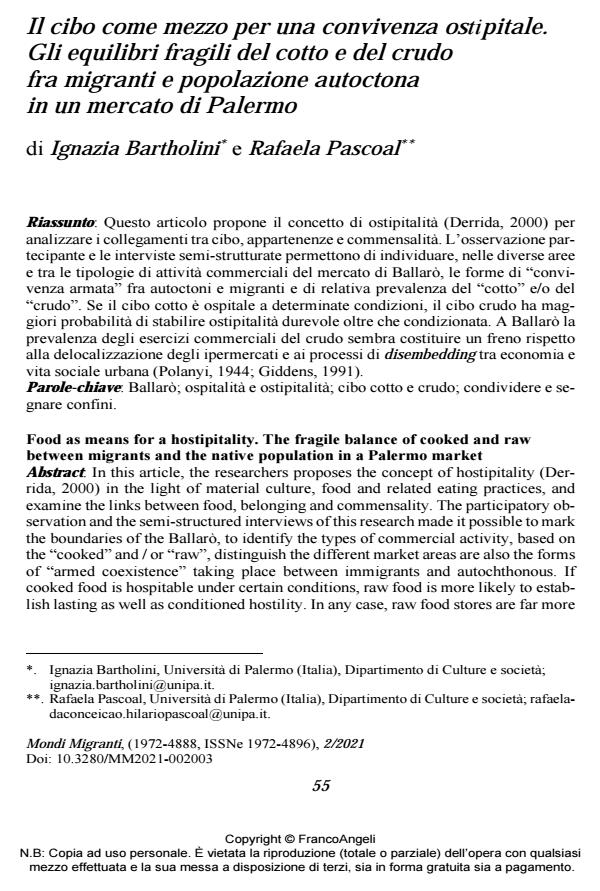Food as means for a hostipitality. The fragile balance of cooked and raw between migrants and the native population in a Palermo market
Journal title MONDI MIGRANTI
Author/s Ignazia Bartholini, Rafaela Pascoal
Publishing Year 2021 Issue 2021/2
Language Italian Pages 17 P. 55-71 File size 277 KB
DOI 10.3280/MM2021-002003
DOI is like a bar code for intellectual property: to have more infomation
click here
Below, you can see the article first page
If you want to buy this article in PDF format, you can do it, following the instructions to buy download credits

FrancoAngeli is member of Publishers International Linking Association, Inc (PILA), a not-for-profit association which run the CrossRef service enabling links to and from online scholarly content.
In this article, the researchers proposes the concept of hostipitality (Derrida, 2000) in the light of material culture, food and related eating practices, and examine the links between food, belonging and commensality. The participatory observation and the semi-structured interviews of this research made it possible to mark the boundaries of the Ballarò, to identify the types of commercial activity, based on the "cooked" and / or "raw", distinguish the different market areas are also the forms of "armed coexistence" taking place between immigrants and autochtho-nous. If cooked food is hospitable under certain conditions, raw food is more likely to establish lasting as well as conditioned hostility. In any case, raw food stores are far more numerous in the Ballarò market, and constitute a brake on "delocalization" of hypermarkets and to "disembedding" (Polanyi, 1944; Anthony Giddens, 1991) of urban populations.
Keywords: Ballarò; hospitality and hostispitality; cooked and raw food; sharing e marking boundaries.
- “Bridging cultures through food”: A qualitative analysis of food dynamic between Italian host families and Ukrainian refugees Martina Arcadu, Martina Olcese, Greta Rovetta, Laura Migliorini, in International Journal of Intercultural Relations 102048/2024 pp.102048
DOI: 10.1016/j.ijintrel.2024.102048
Ignazia Bartholini, Rafaela Pascoal, Il cibo come mezzo per una convivenza ostipitale. Gli equilibri fragili del cotto e del crudo fra migranti e popolazione autoctona in un mercato di Palermo in "MONDI MIGRANTI" 2/2021, pp 55-71, DOI: 10.3280/MM2021-002003